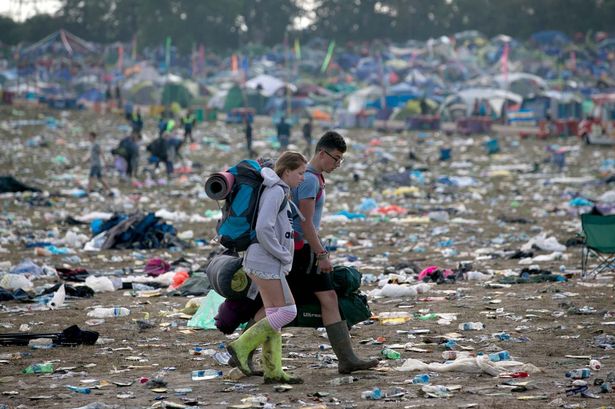10 Ways We Can Reduce Our Environmental Impact At Festivals
Do Festivals Really Have An Environmental Impact?
This is an excerpt from a post on my personal blog, Festivaly.blog. To see the full post click here.
Last month, The Festival Voice published a post about how climate change is killing the party. All over the world festivals are taking steps to reduce their environmental impact. In Finland, Flow festival is credited as being the first carbon neutral festival in the world. Shambala UK operates on 100% renewable power. Lollapalooza Chicago endeavours to offset all the festival’s carbon emissions. Splendour In The Grass has a dedicated campsite for festival goers wishing to minimize their impact on the environment.

So, what can we do to reduce our environmental impact at festivals?
1. Carpool or take ground transportation to the festival. In the UK travel makes up 80% of a festival’s carbon emissions. Utilize festival shuttles or take public transport to the festival. Some festivals even have their own carpool initiatives, like Carpoolchella and Burning Man Rideshare, making it even easier for you to contribute to minimizing the festival’s environmental impact.
2. Go paperless. Take advantage of mobile ticket delivery when purchasing festival tickets. Use your phone to take photos or screenshots of the set times instead of buying paper programs. Say no to receipts. If you do use any paper, ensure it is deposited in the paper recycling bin.
3. Say no to straws. If you wish to use a straw then invest in a reusable metal straw like this one. In case you missed it, here is a video showing marine biologists removing a straw from a sea turtle’s nose.

4. Bring a reusable cup, bottle or hydration pack. In 2014 Glastonbury estimated that around 1 million single-use plastic bottles were used during the festival. During Glasto’s fallow year in 2018, organisers announced that banning plastic bottles would be a major focus for this year’s festival. Hydration backpacks, like Vibedration, are a great way for festival goers to eliminate their plastic usage. Shambala’s ‘Bring A Cup’ campaign helped them to achieve a five-star Creative Green rating in 2017.
5. Avoid single-use plastics. Bring a reusable shopping bag. Ask the food trucks to serve your food on your own reusable plate or container. Invest in reusable bamboo cutlery set like this one. Bring your shampoo and soap in refillable containers, or better yet, use bar soap to avoid unnecessary plastic waste.

6. Be smart with your glitter. Microplastics damage our environment. Use bio glitter like Terra Dust from Lunatics. Apply your glitter with a peel-off glue like this one from the Gypsy Shrine. Brush off all glitter before you shower and use a drain filter, remember all drains lead to the ocean. Consider stick on face gems as an alternative to glitter.
7. Recycle and repurpose outfits. The fashion industry is the second largest polluter in the world, behind the oil industry. Consider buying second-hand outfits on marketplaces like Depop or Mercari. Choose to shop from eco-conscious brands, like Jackalope Land who have partnered with Trees For The Future to reduce their carbon footprint. After the festival is over, repurpose or sell your outfits.

8. Use solar power. Invest in some rechargeable solar lamps for your campsite. Charge your devices using a portable solar charger, check out Lifewire’s list of the best solar chargers to buy in 2019.
9. Sort and dispose of your garbage and recycling in the correct bins. Many festivals have reward programs in place for recycling. The Tomorrowland Recycle Club awards their top recycler a guaranteed ticket for the following year. Attendees at Electric Forest can earn points to put towards rewards. Sziget festival goers can exchange recycling for wifi or merchandise. If you are a smoker, carry a portable ashtray. It can take up to 10 years for a cigarette butt to decompose.

⒑ Take everything with you. Pack up your tent, even if you don’t need it after the festival. On your way out of the campsite, see about donating your equipment to a charity partner of the festival. Green Man distributes donations to refugees in Calais, France. You could even go a step further and volunteer to help clean up after the festival through Oxfam, Work Exchange Team or by contacting the festival directly.
I know it doesn’t seem like much, but if we as festival-goers become aware of the changes we can make to reduce the environmental impact of festivals, the changes we make will become habits. Perhaps, in twenty years time, carbon neutral festivals will be the norm? One can hope.

